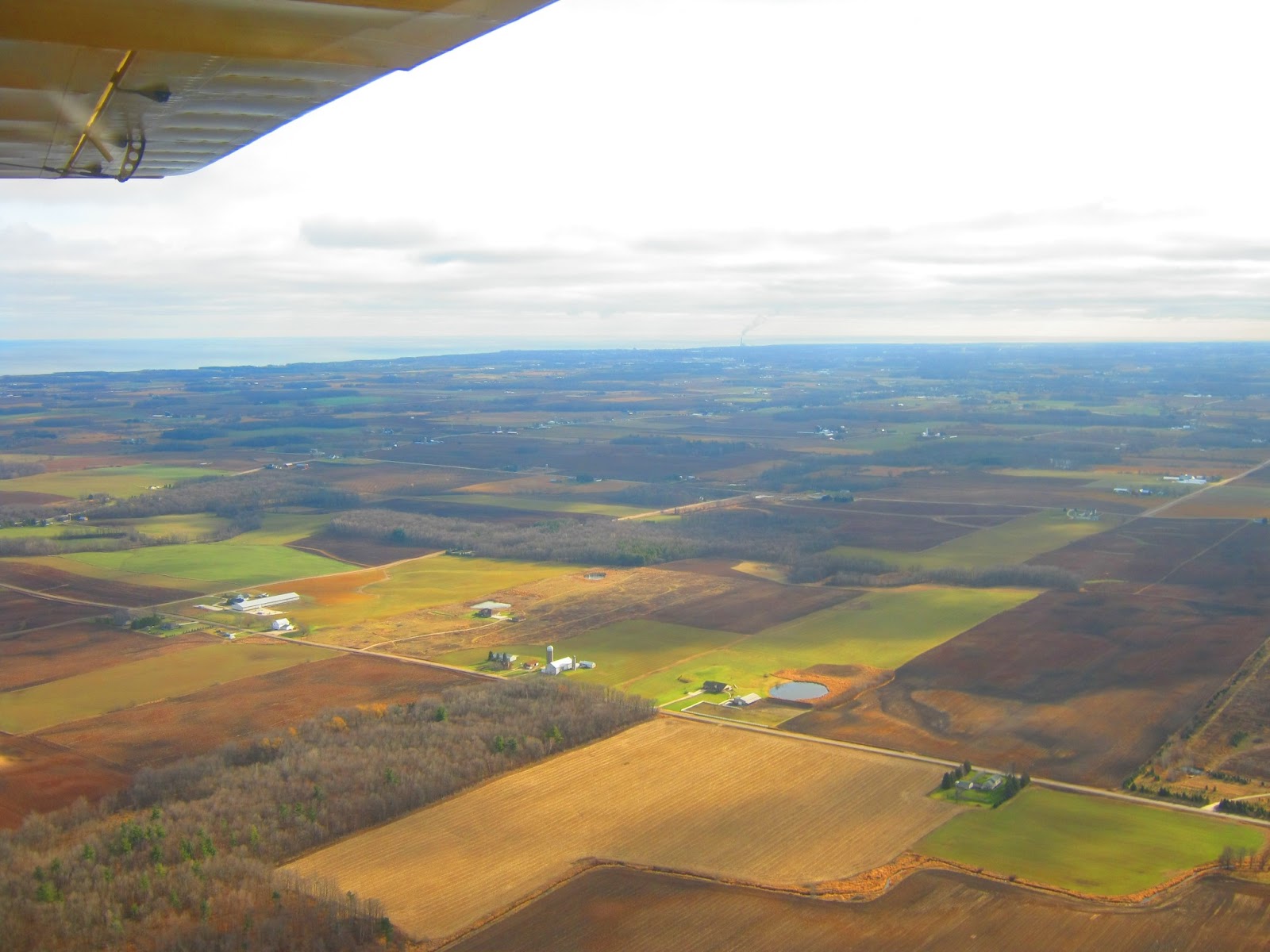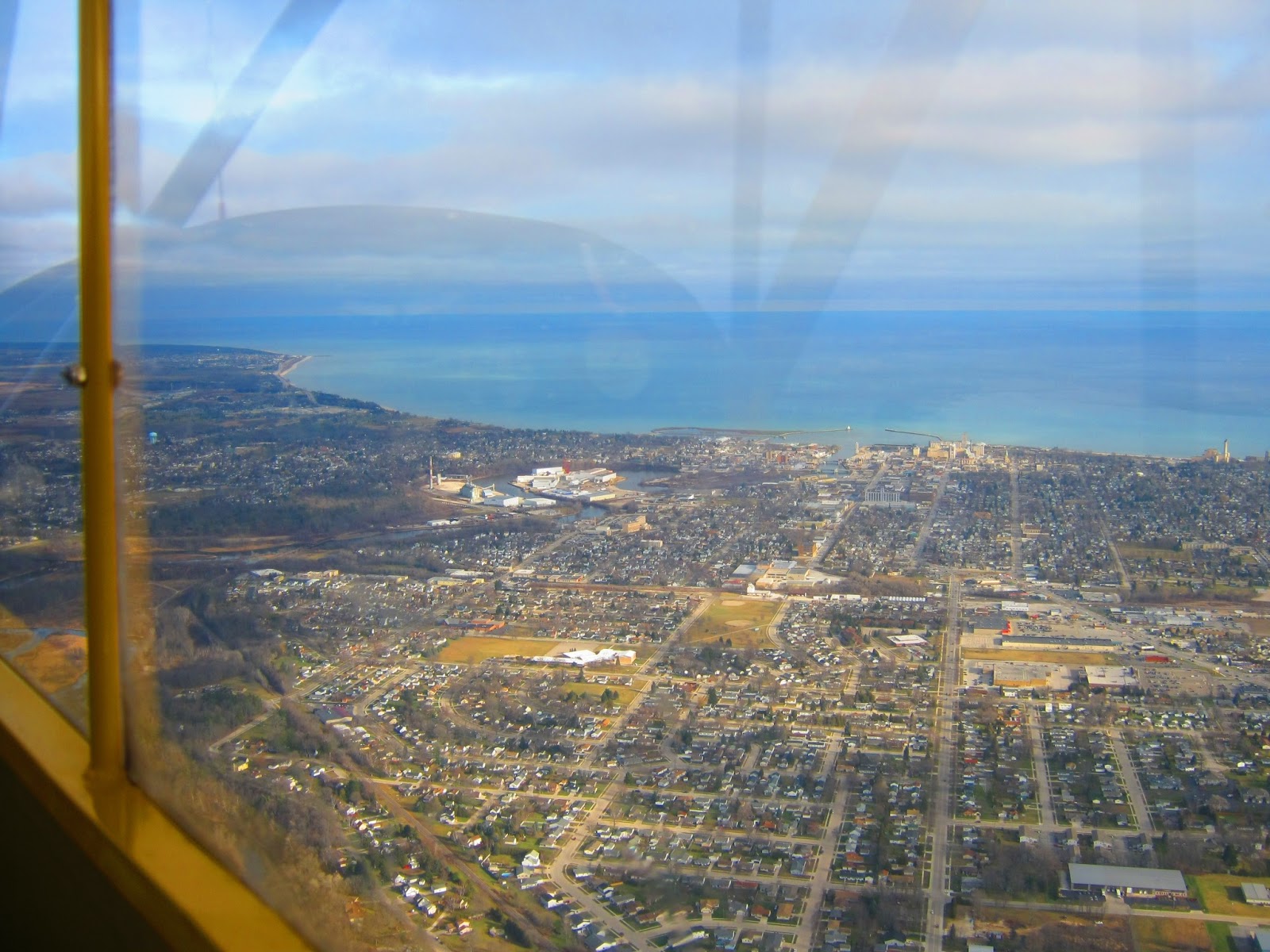5-1-13
1.0 hours logged
46.3 hours total recorded in logbook
Though a lesson scheduled for yesterday morning had to be scrapped because of thunderstorms in the area, today dawned sunny. The winds were not too strong and the morning air was smooth. Jim went over the plan for the day's flight with me after I'd preflighted the plane then we were climbing in and were soon ready for takeoff at 27. I find the ground handling gets a little easier each time as I continue to readjust to it.
Once airborne after a smooth takeoff, Jim showed me how to fly the 275 degree radial using the VOR. As I said in my last post, I had an introduction to this instrument at my previous lesson and, though understanding them for the written test gave me fits, I found it to be a relatively straightforward instrument to use. Flying this course soon had us over our destination only about 12 nautical miles outside of OSH--a narrow strip of green scarcely distinguisheable as an airstrip unless you could see the white specks on either end which marked the thresholds or the windsock off to one side. I flew right over it the first time without ever seeing it and only after circling back did I finally make it out.
 |
| What a VOR indicator looks like |
We flew a few practice patterns around it, first at high alititude. I practiced maintaining speed and alititude with pitch and power adjustments just as we'd done at my last lesson. The only difference was that now we were flying the rectangular course that makes up a standard traffic pattern. After a few of these, Jim had me take it down a few thousand feet where we did the same thing at lower altitude and slower speed but still without descending on the final leg. At last, however, he had me do this too and then had me hold that low altitude over the runway before adding power back in and climbing away.
Now it was time to try it at OSH, the "big" airport. I called the tower and we were given permission to fly a straight-in approach to runway 9. As we neared it, we began a descent for a low pass over the runway. About a wingspan over the runway, I flew most of its length then added the power back in and flew an entire pattern, extending my downwind leg so as not to "catch" another plane that was just turning final for our runway. In the RV-6 it's extremely easy to find yourself suddenly flying a good deal faster than the standard traffic pattern speed of 80 knots if you aren't precise with your control inputs. This particular type of airplane is built for speed and it doesn't want to slow down which can be a good thing. I'm just not used to having
to make a plane slow down. The RV-6 has so much extra speed and power than I'm used to and it requires constant vigilance for me to stay on top of it because it's such a fast airplane! I'm still learning to keep that all under control. It has a tremendous amount of performance when compared to the Cub or even a Cessna 172, a very standard training airplane. Once you finally do get it slowed down however, it makes gorgeous landings as I discovered once again as we touched down and rolled out smoothly. It's really a sweet airplane once you've become aquainted with it. After fueling, we taxied back to Weeks. Another hour, another lesson, another step closer...
 |
| My instructor, Jim, and I after the flight |

























































